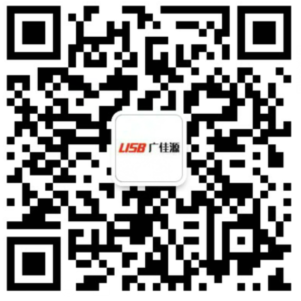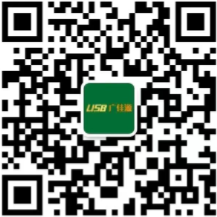 Mr. Chen:136-6225-2835
Mr. Chen:136-6225-2835
 Miss Chen:189-2385-0895
Miss Chen:189-2385-0895
Shenzhen Guangjiayuan Electronic Technology Co., Ltd
Mr. Chen: 136-6225-2835 (same WeChat account)
QQ: 979285705
Miss Chen: 189-2385-0895 (same WeChat account)
QQ: 2391552662
Chen Weiting :135-3824-4786 (same WeChat account)
Chen Weihao: 139-2459-4393 (same WeChat account)
Tel: 86-0755-33182327
Email: gjydz88@163.com
Website: www.usb-type.com
Address: Building 10, Hongxing Gebu Qixiang, Songgang Town, Bao'an District, Shenzhen, Guangdong Province
The intelligence of mobile phones makes them distinguish between CPU, memory, and other components like computers. Therefore, smartphones have added a USB interface to transmit data. Due to the size limitations of the phone itself, its USB interface not only transfers data, but also undertakes charging tasks. Therefore, this part is particularly important for the phone. If it breaks down, it can be replaced with parts or the entire motherboard.
The early interface of smartphones was the coexistence of Micro USB and Mini USB. With the former solving problems such as short lifespan and large size, it was also compatible with the USB 1.1/USB 2.0 standard and OTG function at that time, and supported data transmission and charging. Therefore, Micro USB became the universal interface for most smartphones. However, as mobile phone manufacturers make the body thinner, they need thinner interfaces to replace the micro USB interface. As a result, Type-C applications have emerged. This interface not only helps reduce the thickness of the body, but also allows for forward/backward insertion, so users don't have to worry about the forward/reverse issues caused by plugging and unplugging.
Advantages of USB Type-C
Speaking of advantages, the most intuitive feeling that comes to us is that when inserting cables, the error rate can be reduced to 0. After all, both positive and negative operations can be inserted, and even 3-year-old children will not make mistakes... In terms of transmission speed, Type-C supports USB 3.1 standard, and theoretically, the transmission speed can reach 10Gbps. Of course, if the manufacturer only replaces the phone interface design without adopting new standards, it will naturally not reach this speed.
More rich scalability. The computer can be connected to almost all external devices via USB, but in terms of audio and video transmission, USB3.0 and its previous versions can only stay at the full HD level of up to 1080P, while Type-C interface under USB3.1 standard can transmit up to 4K display images.

Stronger power supply capability. The power supply capacity of the Type-C interface under the USB3.1 standard can reach up to 20V/5A, which can not only meet the charging requirements of mobile phones, but also meet the charging needs of tablet devices and computers; In addition, with this power supply capability, it can also avoid the trouble of connecting other external devices with higher power consumption to another power source.
The birth of USB Type-C is closely related to ultra-thin phones, as it can occupy less internal space without being restricted by direction and reducing wear. For mobile product designers, this small change can bring more possibilities and may break the current record for the thinnest body thickness.
In addition, the Type-C interface using the USB 3.1 standard supports an output power of up to 100W, and through this interface, bi-directional power supply can be achieved, such as charging oneself while supplying power to external devices. The charging speed is also greatly improved. However, in order for the phone to achieve the above functions, the Type-C interface needs to support the USB 3.1 standard, so most Type-C phones currently do not support true fast charging.
Disadvantages of USB Type-C
From the current situation, the biggest disadvantage of Type-C is that there are relatively few phones that support this standard. Flagship models such as the Samsung S7 series and Sony Xperia X series released in the first quarter of this year have not adopted this standard. The reason for this is that Type-C is not compatible with existing Micro USB devices and has high manufacturing costs, but this is also a necessary path in the innovation process.
It is worth noting that due to the open and flexible nature of Type-C, once attacked by hackers, the impact can be significant, especially when facing BadUSB vulnerabilities, which can easily infect other electronic devices with malicious code and have a lower likelihood of repair. However, since the USB interface has become a standard, it must be followed, which is also unavoidable for all manufacturers. Therefore, it is recommended that users do not use strangers' computers or download unknown software at will.
Although Type-C has some shortcomings, it will be a matter of time before it becomes mainstream as the latest USB standard. After all, the Type-C interface using the USB 3.1 standard supports up to 100W of output power (charging speed will be increased again), and the data transfer speed is much higher than the current standard. When consumers realize that USB Type-C can bring many benefits, they believe that it will be widely popularized like USB 2.0, We'll wait and see!
Source: http://www.gjydz.com/html/article_208.html
Contact person:
Mr. Chen 136-6225-2835 (same WeChat account)
Miss Chen 189-2385-0895 (same WeChat account)
Chen Weiting 135-3824-4786 (same WeChat account)
Chen Weihao 139-2459-4393 (same WeChat account)
Address:
Building 10, Hongxing Gebu Qixiang, Songgang Town, Bao'an District, Shenzhen, Guangdong Province
 |
 |
| Technology 1 | Technology 2 |